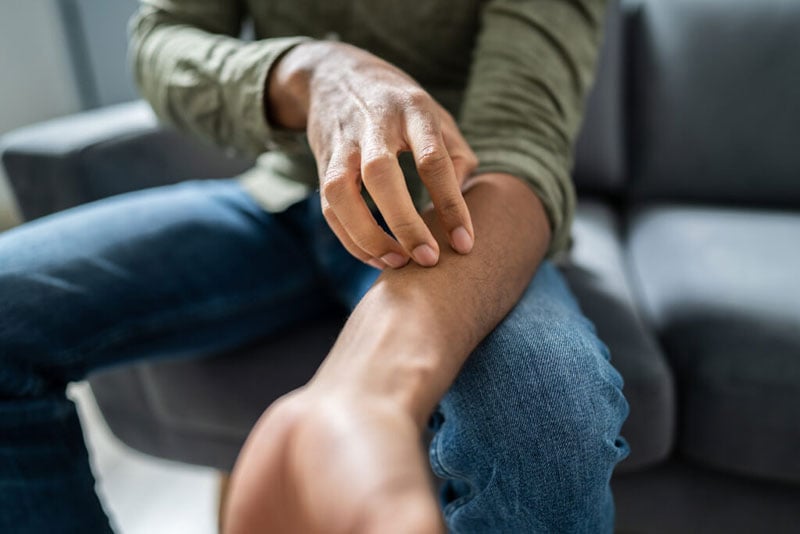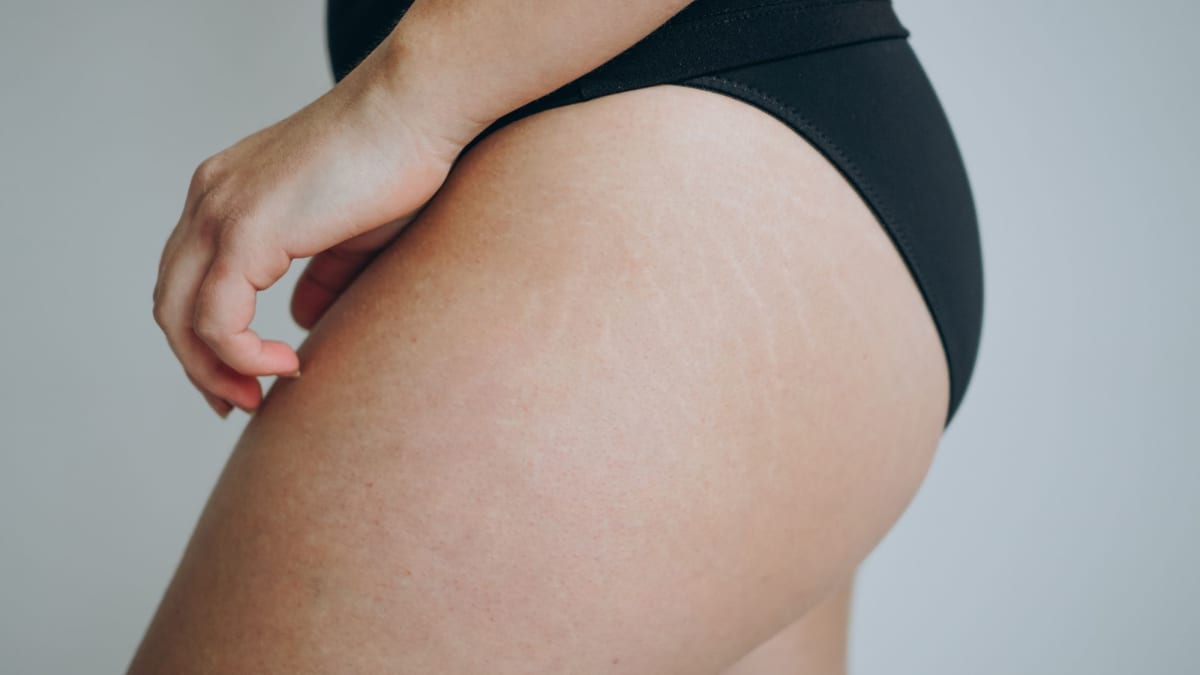Skincare for Keratosis Pilaris on Butt: Tips & Tricks
As a skincare professional, it's essential to understand various skin conditions to provide comprehensive care to your clients. One such condition that often deserves attention is keratosis pilaris, especially when it forms on the buttocks. Recognized by its distinct rough, bumpy texture, keratosis pilaris can be uncomfortable and make many feel self-conscious.
Addressing skincare for keratosis pilaris on the butt requires a focused approach that includes proper exfoliation, hydration, and effective management routines. Lets explore the details of this skin condition and discover how you can provide valuable guidance and solutions for your clients.

Understanding Keratosis Pilaris
Keratosis pilaris is a prevalent skin condition marked by small, rough bumps that can develop in various body areas, including the buttocks. These bumps form due to an excess of keratin, a protective protein that helps shield the skin from infections and harmful environmental factors. However, when keratin accumulates, it can clog hair follicles, leading to the unwanted texture commonly seen in keratosis pilaris.
Though it is a benign condition, keratosis pilaris can be unsightly and may cause itchiness. Understanding the triggers and causes is crucial in crafting an effective skincare regimen aimed at reducing its visibility.
Exfoliation: A Vital Step in Treatment
Regular exfoliation is a key step in managing keratosis pilaris on the butt. This process aids in eliminating dead skin cells and curbing keratin buildup. As a skincare expert, recommending gentle exfoliants is essential for helping clients tackle this issue.
Chemical Exfoliants
Chemical exfoliants that include alpha-hydroxy acids (AHAs) or beta-hydroxy acids (BHAs) can prove particularly effective. These agents work by breaking down the bonds between dead skin cells, leading to a smoother texture and an enhanced skin tone. Glycolic acid and salicylic acid are among the popular options for treating keratosis pilaris.
Physical Exfoliants
Physical exfoliants, like scrubs containing fine particles, can also provide benefits. Nonetheless, it's important to remind clients to use these products with care to avoid further irritation. Suggesting items with microbeads or gentle exfoliating brushes for use while showering can be effective.
Hydration: Crucial for Skin Health
Maintaining well-hydrated skin is another essential aspect of managing keratosis pilaris. Dry skin can aggravate the condition, making the bumps more noticeable. Recommend moisturizing products infused with ingredients such as urea, lactic acid, or glycerin to help lock in moisture and soften the skin.
Encourage clients to apply their moisturizer right after bathing, while their skin is still slightly damp, for optimal moisture retention. Consistent hydration can lead to significant improvements in skin texture over time.
Additional Tips for Managing Keratosis Pilaris
Avoid Harsh Soaps
Educate your clients on the importance of using gentle, fragrance-free soaps. Harsh cleansers can strip the skin of its natural oils, leading to dryness and exacerbating keratosis pilaris.
Encouraging Sun Protection
Although sun exposure may help improve keratosis pilaris, excessive sunlight can damage the skin and worsen the condition. Recommend using a high-SPF sunscreen to protect the skin while still reaping some of the benefits of sunlight.
Diet and Lifestyle Considerations
While topical products are vital, factors such as diet and lifestyle also play a significant role in the severity of keratosis pilaris. Encourage clients to maintain a balanced diet rich in essential fatty acids, which are beneficial for skin health. Additionally, keeping well-hydrated by drinking plenty of water is critical for overall skin wellness.
For a better understanding of keratosis pilaris, consider visiting this CeraVe article for additional insights.
In Conclusion
Your expertise as a skincare professional can immensely benefit individuals grappling with keratosis pilaris on the buttocks. By comprehending the underlying causes and implementing effective management strategies, you can assist clients in achieving smoother, healthier skin. Don't forget to customize your recommendations based on each client's unique needs, empowering them to feel confident and well-informed throughout their skincare journey.

Frequently Asked Questions
What is the best treatment for keratosis pilaris on the butt?
The best treatment approach includes regular exfoliation with either chemical or physical exfoliants and consistent hydration with products featuring urea or lactic acid.
Can diet affect keratosis pilaris?
Yes, a nutritious diet rich in essential fatty acids along with proper hydration can promote skin health and potentially lessen the severity of keratosis pilaris.
Are there any long-term solutions for keratosis pilaris?
While there isn't a permanent cure, regular skincare routinesincluding exfoliation and hydrationcan significantly enhance the condition over time.

